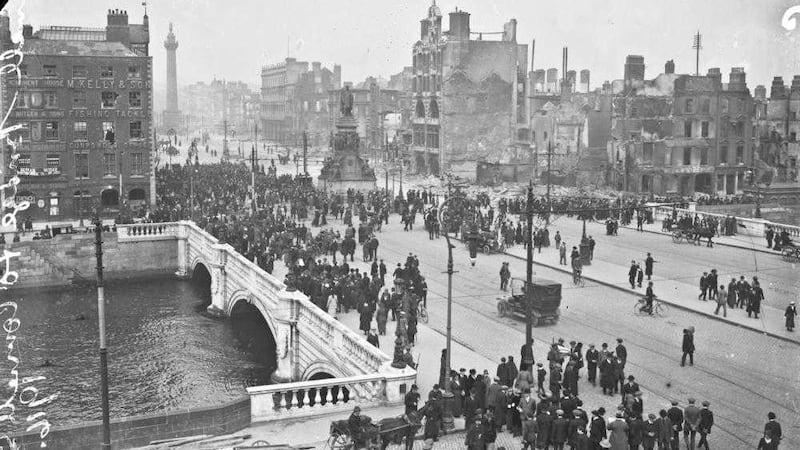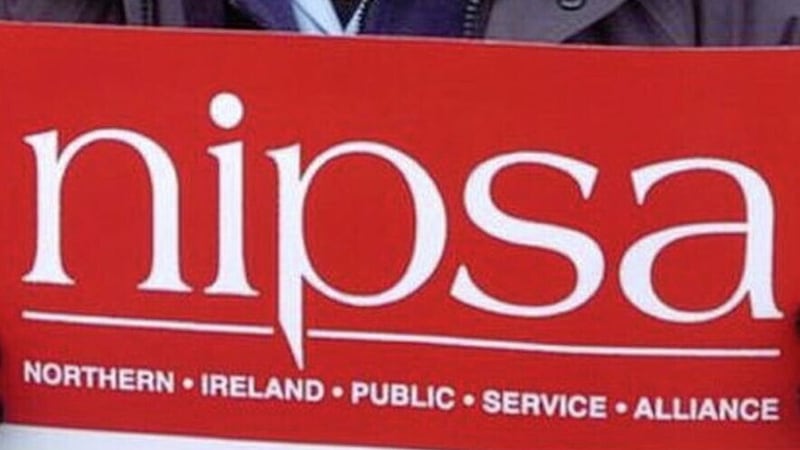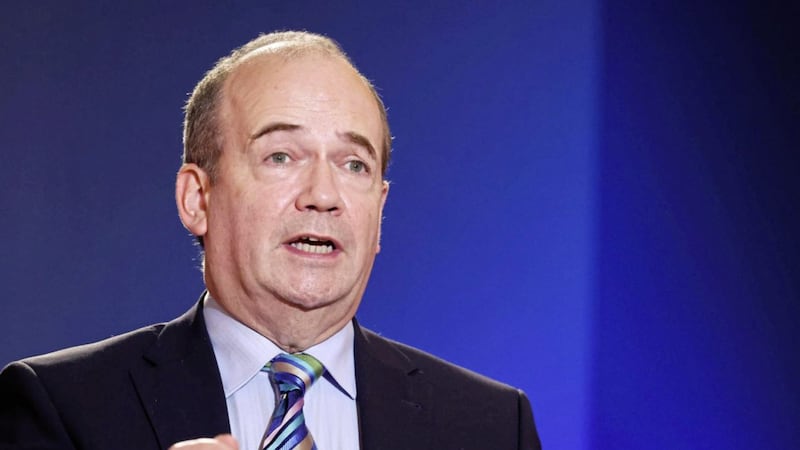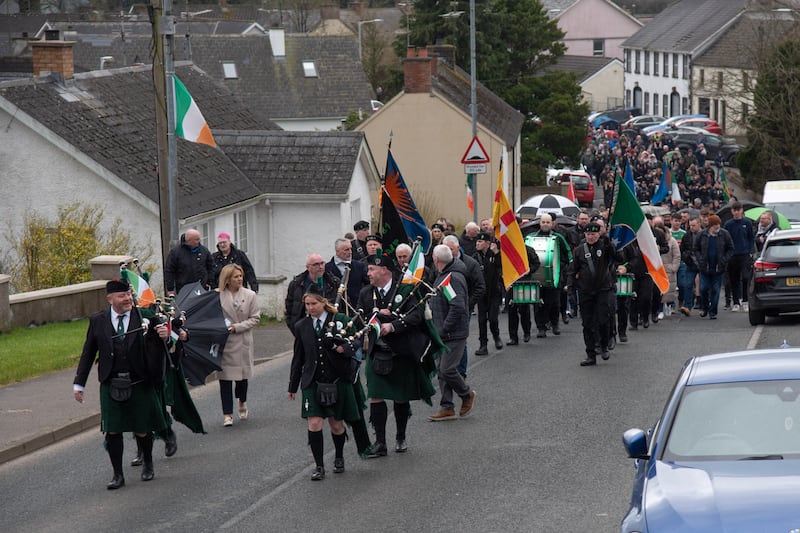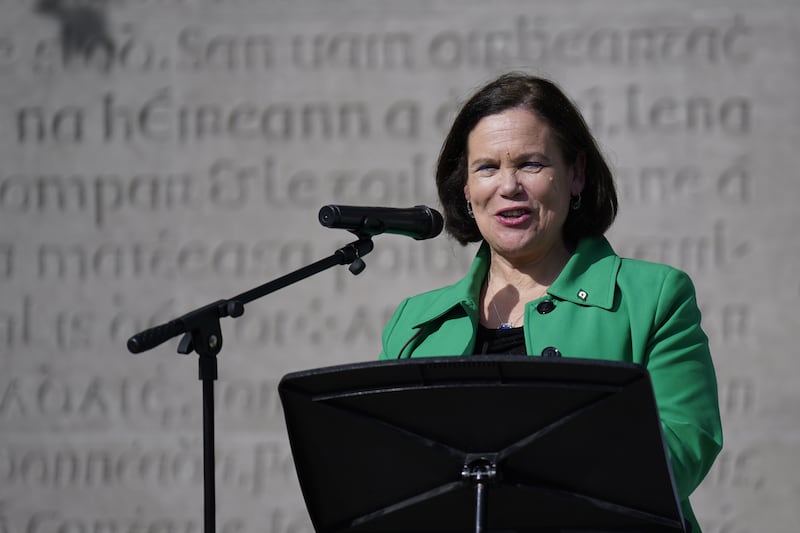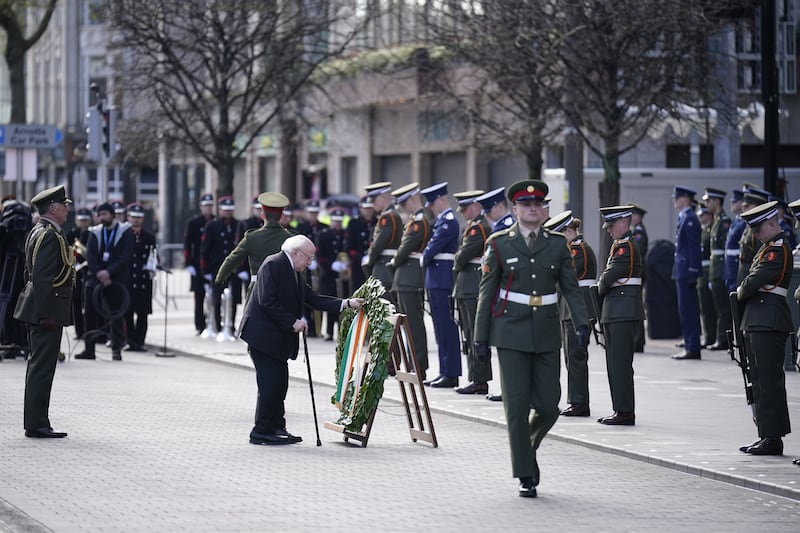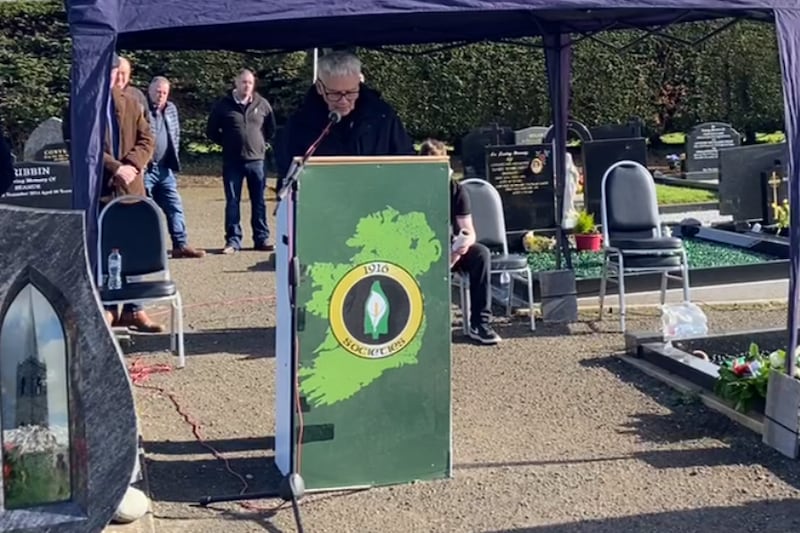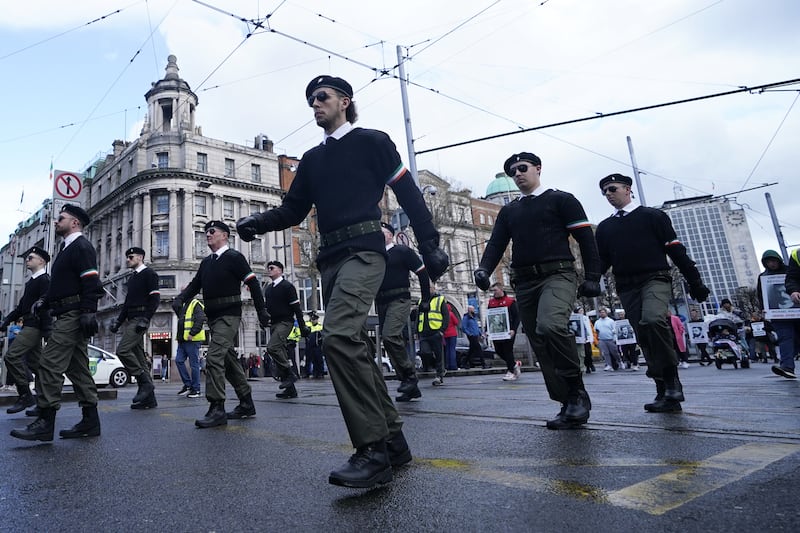ONE of the most sensational eye-witness accounts of the 1916 Rising has surfaced in Belfast after being forgotten for over half a century in a bank deposit box. The 49-page document , written in long-hand on hotel notepaper, describes the thrilling experiences of James Mitchell, a 38-year old primary school teacher from The Mount in east Belfast.
Mitchell had arrived in Dublin with his younger brother Joe on Easter Saturday. His objective – ironic in view of the IRB’s plans for a Rising – was to enlist in the British army. After taking in a show at the Theatre Royale and an evening socialising at the officers’ mess in a local barracks, the Belfast man accepted the King’s shilling: "Result – I became soldier of the King on Easter Sunday."
On Easter Monday, the Belfast brothers joined the middle-class exodus from the capital to Fairyhouse Races. While there, however, they heard rumours about "trouble with the Sinn Feiners in the city". Mitchell found himself marooned in the Gresham Hotel in Sackville Street (now O’Connell Street) for the duration of the insurrection. It was there that he penned his graphic account of his dramatic experiences on hotel notepapaer.
It was not until that evening that he realised the seriousness of the situation. A Belfast acquaintance reported how he had been stopped in St Stephen’s Green by armed ‘Sinn Feiners’ – actually members of Countess Markievicz’s garrison – who seized his car.
Anxious to assess the situation for himself, Mitchell slipped out into the street to discover "some ghastly sights". His diary records: "Two horses lay dead opposite the Hamman Hotel, their soldier riders having been shot dead... Human blood covered the footway." The soldiers he referred to were members of company of Lancers fired on by insurgents.
The Belfast man noted that "all police and military were confined to barracks and the mob had complete possession of the principal thoroughfares". He witnessed large-scale looting in Sackville Street.
Video courtesy of Creative Centenaries/The Nerve Centre
That night, an eerie silence descended on the city centre where "every building was barricaded and loop-holed by the Sinn Feiners, but all was peaceful within".
Life continued more or less normally in the Gresham, with the dining room and bars kept busy by the "nerve-shattered guests".
At 8am on Wednesday morning, April 26, Mitchell was awakened by ‘a terrific rattling and roaring’ nearby. This was caused by the British bombardment of Liberty Hall, James Connolly’s headquarters and, in Mitchell’s view, "the headquarters of all the disaffection". (Connolly’s revlutioary views were well-known.)
Peering outside, the Belfast man noticed three dead bodies at Parnell’s Statue. A few minutes later, he heard a roaring noise and found "Sackville Street enveloped in bluish smoke and guns rattling away... A boat of some kind is at O’Connell Bridge and is evidently the cause of the loud reverberations".
This refers to the shelling of rebel strongholds by British gunboat the Helga.
Yet, as Mitchell records, the rebel headquarters remained intact: "The GPO was still solidly square and flying on top of the portico was the flag of the Irish Republic."
On the Thursday of Easter Week, amazingly, he received a phone call from a British officer reporting serious fighting close to Portobello Barracks.
As the military cordon tightened around the rebel outposts, Mitchell’s pro-British outlook surfaced: "I felt relief and secretly exulted at the inglorious end of the creatures with such mean and selfish minds."
At 4pm on Saturday, following Patrick Pearse’s surrender to General Lowe on nearby Moore Street, Mitchell witnessed the surrender of 500 insurgents who decommissioned their rifles outside the hotel.
Wexford native Michael O'Hanrahan, one of the executed leaders of the Rising, is escorted into Inchicore for his court martial (National Library of Ireland)
By Monday morning – a week after the outbreak – Jim Mitchell rose to find the streets crowded with sight-seers and patrolled by Lancers. Walking towards St Stephen’s Green, he was astounded by the surrounding devastation and "the trenches which had been dug out by the Sinn Feiners’ in the Green itself.
Dublin was now under Martial Law but on Thursday the Belfastman obtained passes for himself and his two companions to return home from the military governor, General Maxwell. Miraculously they managed to retrieve their car and return to a peaceful Belfast.
- Éamon Phoenix’s book, based on the diary, An Ulster Unionist at the 1916 Rising, is due for publication later this year by the Ulster Historical Foundation.
